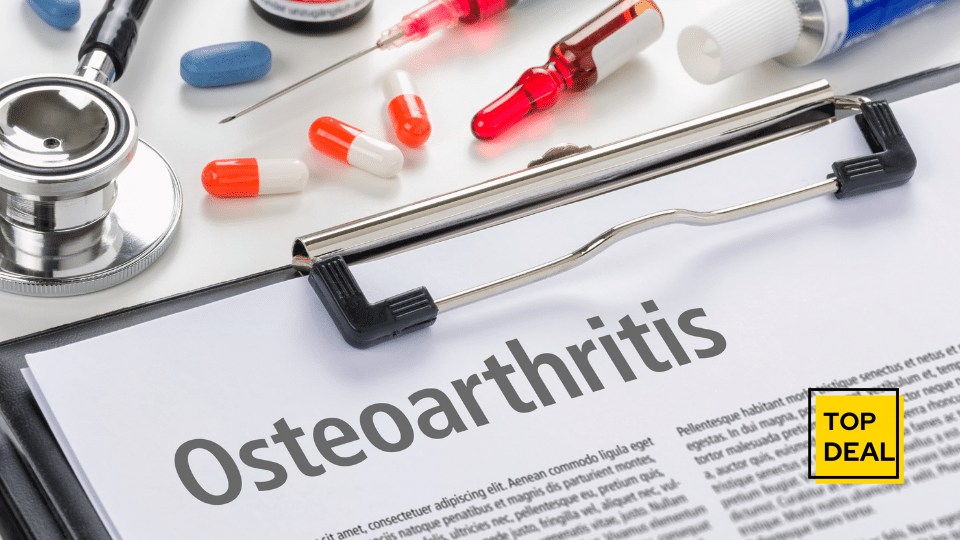
Osteoarthritis In Seniors – Important Things You Need To Know About It In 2022!
Osteoarthritis is a degenerative disease that can lead to chronic pain, disability, and even the need for joint replacement surgery. It’s also one of the most common diseases among people over age 55. But there are things you can do to help prevent it or slow its progression. And with early diagnosis and treatment, you may never have to deal with any of these problems at all! This article will explore what osteoarthritis is, how it progresses, what the risks are, and what steps you can take to protect yourself from developing this painful condition.
Table of Contents
What Is Osteoarthritis?
Osteoarthritis, often called “wear and tear” arthritis, is a degenerative joint disease that affects the cartilage in your joints. Cartilage is a tough, elastic material that covers the end of bones and helps them move smoothly against each other. When you have this disease, the cartilage breaks down and wears away. This can lead to pain, stiffness, swelling, and loss of mobility in the affected joint.
Osteoarthritis is most common in people over age 55, but it can occur at any age. It’s more common in women than men, and it tends to run in families.
How Does The Disease Progress?
The progression of osteoarthritis varies from person to person. Some people may experience only minor symptoms, while others may eventually need surgery to replace a damaged joint. The following are the most common stages of osteoarthritis progression:
1. Initial Stage
In the initial stage, you may notice that your joints are stiff and a little sore after activity. You may also experience some swelling and a limited range of motion.
2. Moderate Stage
As the disease progresses, you may find that your joints are increasingly stiff and sore and that activities such as walking or climbing stairs become more difficult. You may also start to notice a decrease in your range of motion.
3. Severe Stage

In the severe stage, osteitis can cause chronic pain and disability. You may find it difficult or impossible to perform everyday activities, and you may need assistance from others to do them. You may also experience joint swelling and deformity.
4. End-Stage
In the end stage, many people require surgery to replace a damaged joint.
What Are the Risks?
There are several factors that increase your risk of developing osteoarthritis, including:
- Age – The older you are, the greater your risk of developing the disease.
- Gender – Women are more likely to develop it than men.
- Genetics – If you have a family history of osteoarthritis, you’re more likely to develop it yourself.
- Obesity – People who are obese are more likely to develop it than those who maintain a healthy weight.
- Injury – Any injury can potentially lead to osteoarthritis if it causes enough damage to the joints.
- Lifestyle Habits – Factors such as smoking and inactivity increase your risk of developing osteoarthritis.
How Can You Treat It?
The best way to treat osteoarthritis is by preventing it in the first place. It’s a good idea to start with some moderate exercise, which can help keep your joints healthy and strong. Over-the-counter pain relievers can also help you manage symptoms during flares or if your condition worsens. And there are some dietary changes that you may want to consider; for example, adding more calcium-rich foods to your diet could help strengthen your bones and prevent osteoporosis, which increases the risk of both osteoarthritis and other bone diseases like fractures.
Treatment Options
Once you’ve been diagnosed with osteoarthritis, it’s time to talk about potential treatment options with your doctor. He or she may recommend:
Over-the-counter pain relievers – Common types of over-the-counter pain relievers include acetaminophen and nonsteroidal anti-inflammatory drugs (NSAIDs). Both can help relieve symptoms such as swelling, stiffness, and pain. Your doctor may advise you to take them as needed, or he or she may recommend applying a topical NSAID cream directly to your joints.
Prescription medications – Depending on the severity of your osteoarthritis, your doctor will probably prescribe medicine that combines a corticosteroid with a local anesthetic. The medication has been approved by the FDA for treating knee osteoarthritis in people who have not responded well to other treatments.
Conclusion
Osteoarthritis is the most common form of arthritis, and it can be incredibly painful. Fortunately, you can take steps to prevent or reduce the severity of your symptoms. The key is to start with some moderate exercise and maintain a healthy weight, eat a balanced diet rich in calcium, and speak to your doctor about your options for pain management if needed.



